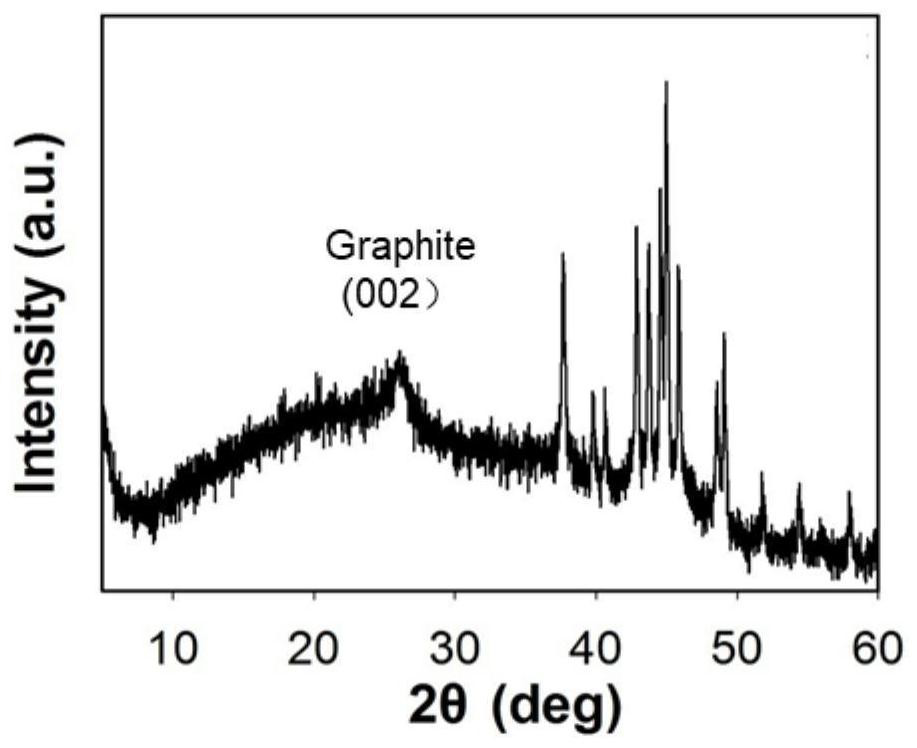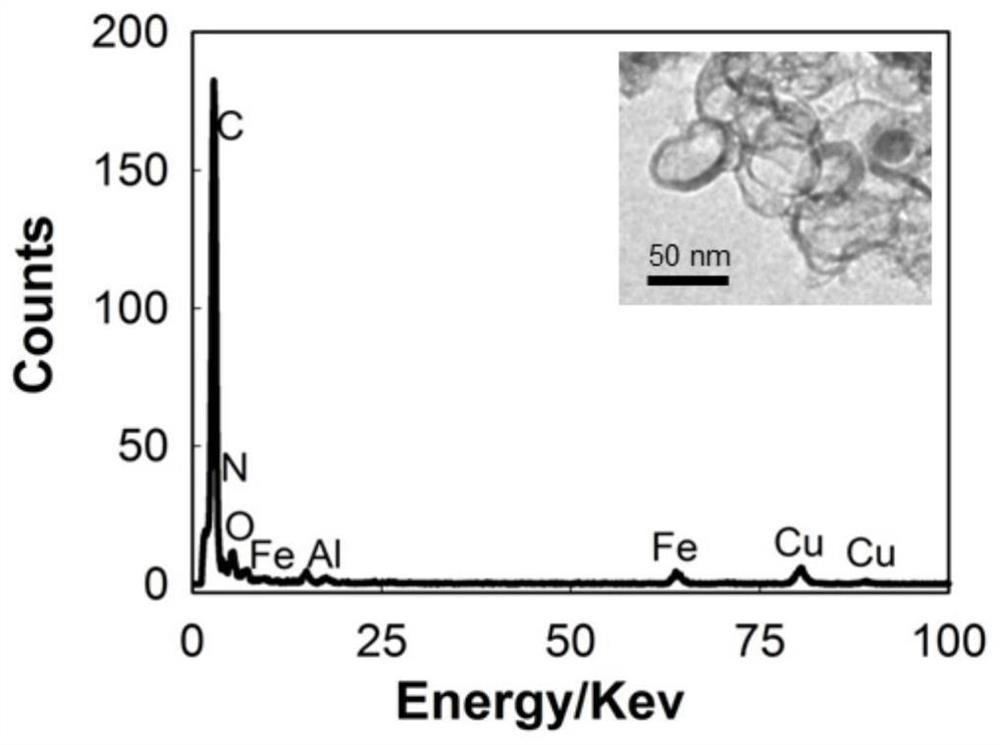Bimetallic doped graphene nano material and application thereof
A nanomaterial and graphene technology, applied in the field of nanotechnology and catalytic materials, can solve the problems of low electron transfer efficiency and achieve the effects of inhibiting mold growth, preventing recurrence, and high reactivity
- Summary
- Abstract
- Description
- Claims
- Application Information
AI Technical Summary
Problems solved by technology
Method used
Image
Examples
Embodiment 1
[0044] A preparation method of bimetallic graphene nanomaterial Fe / Al-GN, comprising the following steps:
[0045] (1) Preparation of precursor MIL-101-NH 2 . 2-aminoterephthalic acid (2.77 g, 15 mmol) was dissolved in a round bottom flask filled with N,N-dimethylformamide (DMF, 600 mL), and the oil bath was heated to 110°C. Then, under magnetic stirring, AlCl was added every 15 minutes 3 ·6H 2 O (7.24g, 30mmol), a total of 7 times. Stirring was maintained and heating at 110°C was continued for 3 hours. After cooling to room temperature, the yellow solid was separated by filtration, washed with DMF and ethanol three times respectively, then treated in ethanol at 90°C for 16 hours, and washed several times with hot ethanol for further purification. Finally the yellow solid collected by centrifugation was dried under vacuum at 120°C for 12 hours for further use. The obtained yellow fixation is the aluminum-centered metal-organic framework compound MIL-101-NH 2 .
[0046]...
Embodiment 2
[0052] Feasibility Analysis of Bimetallic Doped Graphene Nanomaterials (Fe / Al-GN) Catalyzed Hydrogen Peroxide to Generate Hydroxyl Radicals
[0053] Using 5,5-dimethyl-1-pyrroline-N-oxide (DMPO) as OH spin-trapping agent and measuring its electron spin resonance spectrum to investigate the production of hydroxyl radicals from hydrogen peroxide catalyzed by Fe / Al-GN feasibility. The specific method is: with or without H 2 o 2 (6mM) and PBS with different pH were added Fe / Al-GN (2μg) and DMPO (100mM) respectively to obtain five groups of experimental samples, as Figure 5 shown. After all samples were mixed well, they were co-incubated at room temperature for 3 minutes. Afterwards, the EMX-8 / 2.7 spectrometer was used to measure the electron spin resonance spectra of different samples in the X-band. The parameters were set as follows: microwave frequency=9.872GHz, microwave power=6.375mW, modulation frequency=100.00kHz and modulation amplitude=1.00G. Measurement results suc...
Embodiment 3
[0055] Catalytic activity of bimetallic doped graphene nanomaterials (Fe / Al-GN) in different pH environments
[0056] Since free radicals can degrade methylene blue, this example evaluates its catalytic activity by measuring the change in absorbance of methylene blue before and after the treatment of bimetallic-doped graphene nanomaterials. They are 7.4, 6.9, 6.5, 5.4 respectively. To the PBS solution with different pH, add methylene blue (final concentration 5mg / L), Fe-GN (final concentration 20μg / mL) and H 2 o 2 (final concentration 13mM), after mixing well, co-incubate at room temperature for 1 hour. At the same time, set up two negative control groups, on the basis of the positive experimental group ① (pH 7.4), remove Fe-GN and H 2 o 2 , the post-processing remains the same. After the reaction, centrifuge at 8000rpm for 6min, and collect the supernatant. The absorbance of methylene blue in the samples was measured with a UV-2700 ultraviolet spectrometer. The measure...
PUM
 Login to View More
Login to View More Abstract
Description
Claims
Application Information
 Login to View More
Login to View More - R&D
- Intellectual Property
- Life Sciences
- Materials
- Tech Scout
- Unparalleled Data Quality
- Higher Quality Content
- 60% Fewer Hallucinations
Browse by: Latest US Patents, China's latest patents, Technical Efficacy Thesaurus, Application Domain, Technology Topic, Popular Technical Reports.
© 2025 PatSnap. All rights reserved.Legal|Privacy policy|Modern Slavery Act Transparency Statement|Sitemap|About US| Contact US: help@patsnap.com



